Climate Science
The most prestigious scientific bodies in the world have issued clear public statements about the detrimental impact of human carbon emissions on global climate. Read these below:
The World Meteorological Organization (WMO)
The National Academies of Science (NAS)
The American Physical Society (APS)
The American Association for the Advancement of Science (AAAS)
The European Science Foundation
The American Institute of Biological Sciences
Intergovernmental Panel on Climate Change (IPCC)
National Oceanic and Atmospheric Administration (NOAA)
National Aeronautics and Space Administration (NASA)
The Environmental Protection Agency (EPA)
Review essential climate science data in graphical form below.
All graphics are hyperlinked to their original sources.
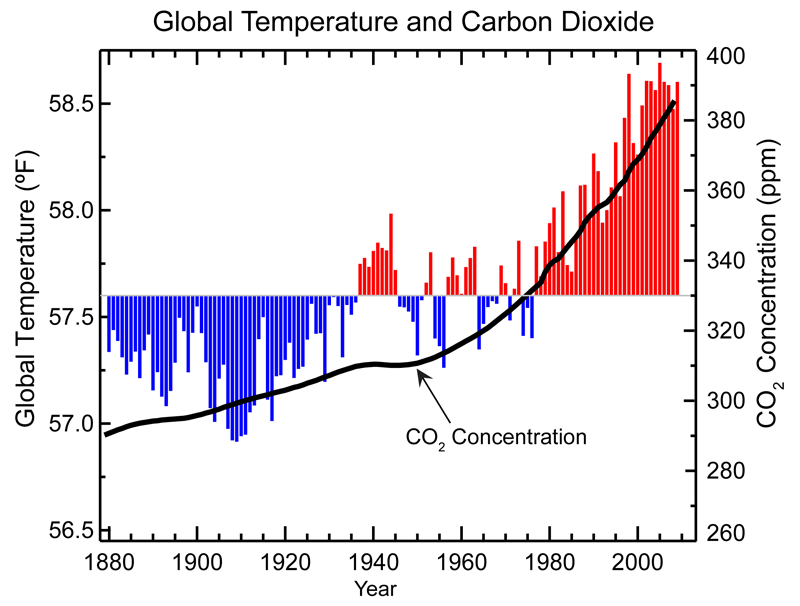
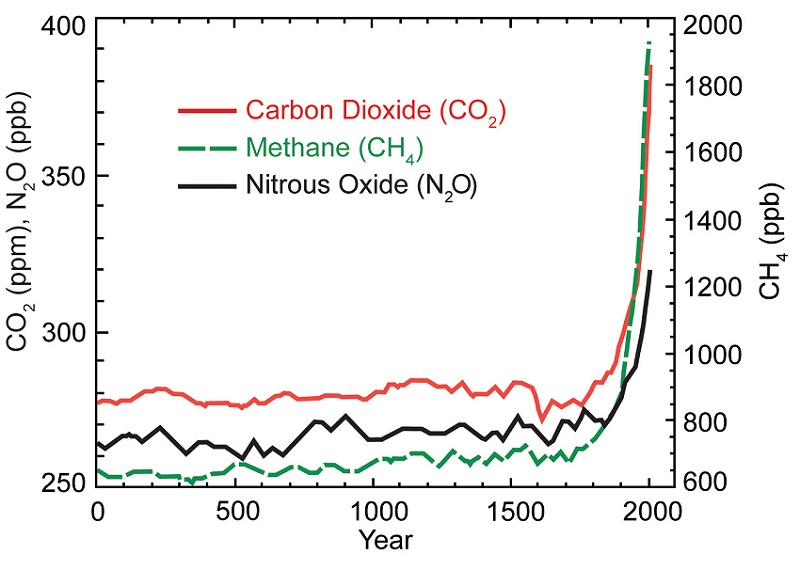
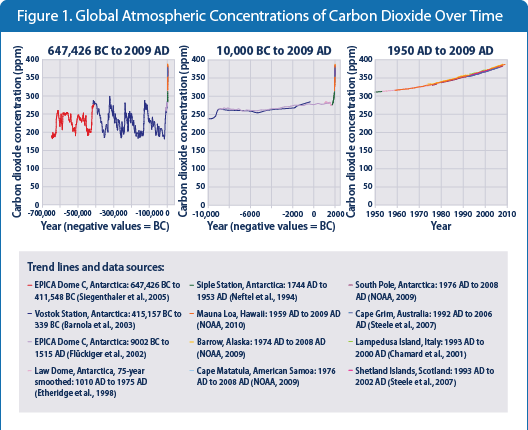
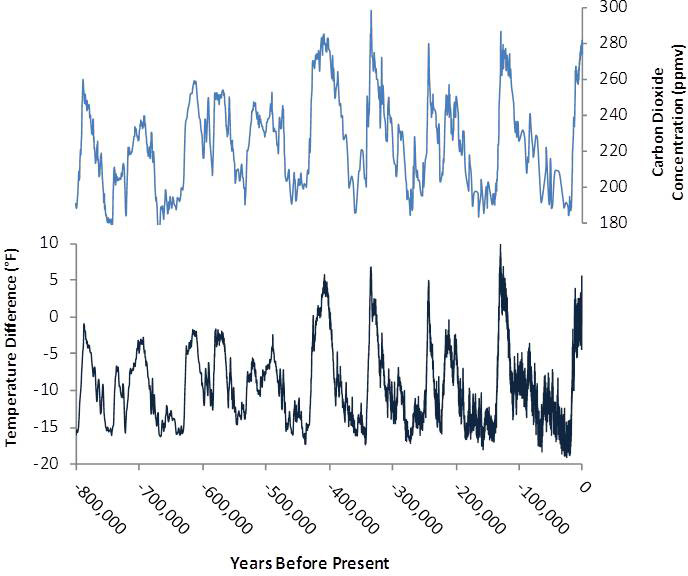
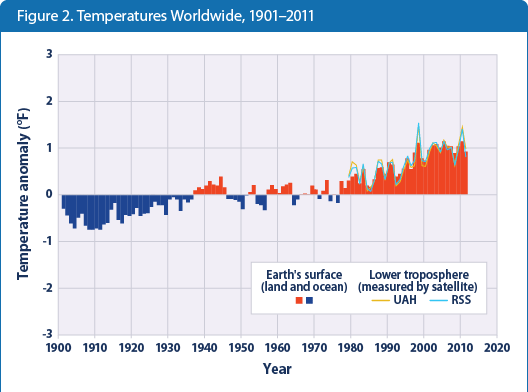
NASA Goddard Space Flight Center Scientific Visualization Studio, © 2012
The Carbon Cycle
Carbon flows through the geosphere, atmosphere, and biosphere in a bio-geochemical cycle known as the carbon cycle.
View some cartoons of the Carbon cycle
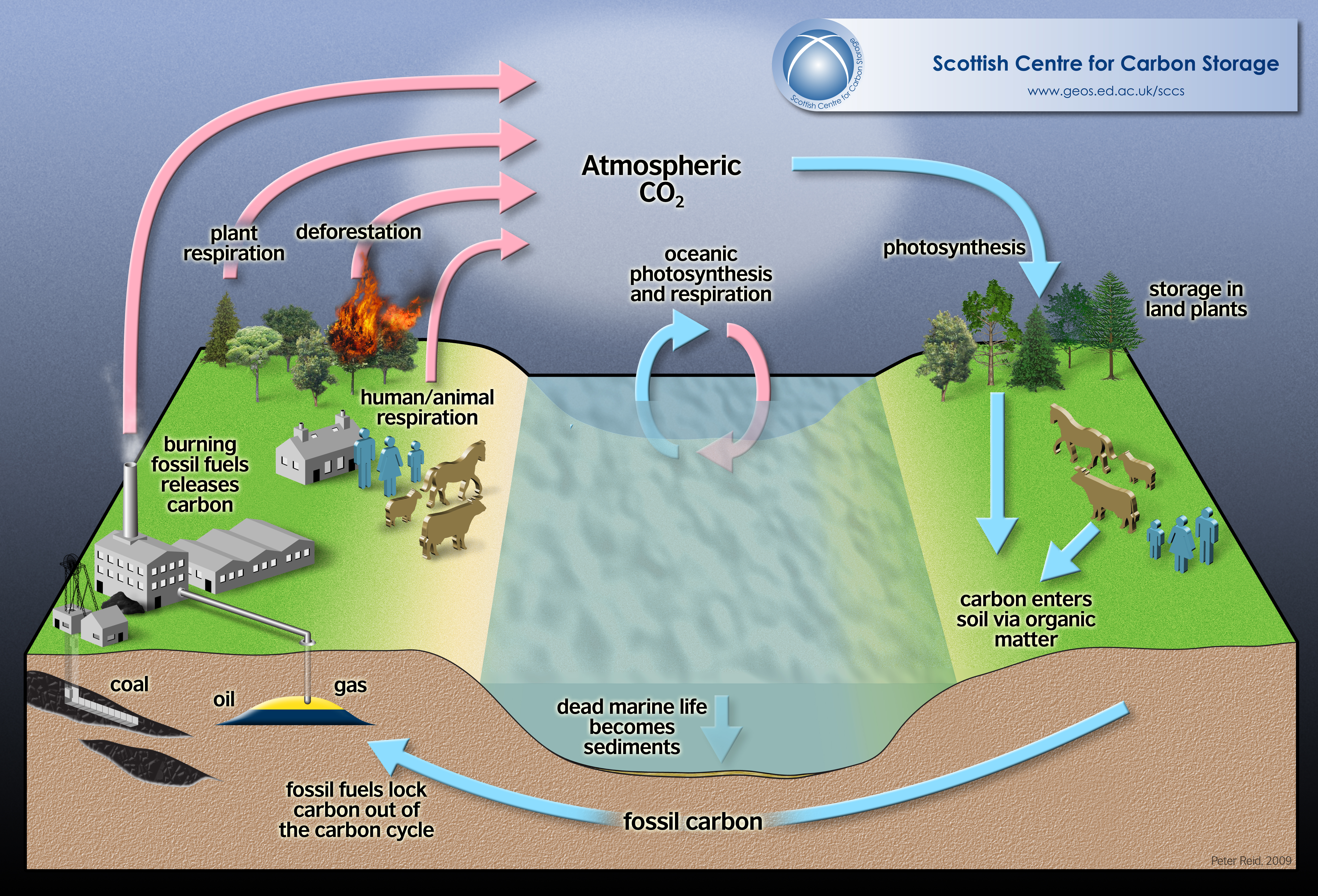
Energy and Carbon in Biological Systems
Biological systems use carbon based molecules as energy currency and play a major role in the carbon cycle.
Plants and other autotrophs are able to use solar energy to combine atmospheric carbon dioxide (CO2) and water (H2O ) to produce oxygen (O2) and sugar. This process called photosynthesis 'stores' energy from the sun in the bonds of sugar molecules (C6H12O6). The summary reaction equation for photosynthesis is:
The energy stored in sugars (and carbohydrates more generally) is used by the cells of most all life forms to drive their own enzymes. The mitochondria inside of cells have enzymes that break sugar down and combine it with oxygen thus providing energy for the cell's processes and producing CO2 and water. The summary reaction equation for this process (called cellular respiration) is:
6 O2 +C6H12O6 -> 6 CO2 + 6 H2O + energized ATP
ATP serves as kind of molecular battery that can carry energy to chemical reactions taking place in various regions of the cell.
Notice that the reactants and products of Photosynthesis are the products and reactants of cellular respiration! Cellular Respiration and Photosynthesis thus form the two legs of the carbon cycle in which carbon is cycled back and forth between the atmosphere and the biosphere.
Here is a picture:
and an of the Carbon Cycle: http://nortonbooks.com/college/biology/animations/ch38a03.htm .
Energy and Carbon
Carbon dioxide (CO2) is also produced when hydrocarbons (like fossil fuels) are combined with Oxygen (O2) and burned for energy by humans. Since the advent of the industrial revolution human society has become a new branch of the carbon cycle. In the last 150 years atmospheric CO2 has increased by about 30%. This is thought to be mostly due to human combustion reactions and human caused land use changes. Here are two game/animations showing how carbon moves about the cycle: http://www.windows.ucar.edu/earth/climate/carbon_cycle.html http://www.uwsp.edu/cnr/wcee/keep/Resources/ccgame/index.htm
Atmospheric Carbon Dioxide
Current levels of atmospheric CO2 are 380ppm which is higher than at any other point in over 1 million years. Here is l a graph of atmospheric CO2 for the past 650,000 years. http://epa.gov/climatechange/science/pastcc_fig1.html Here is another graph http://www.esrl.noaa.gov/gmd/ccgg/trends/co2_data_mlo.html
Notice that the data shows evidence of a natural forcing with a cycle of around ~100,000 years and it also shows an unprecedented climb in the last 150 years.
Scientists are concerned about the effect that rising atmospheric CO2 levels is having on the global climate because of the greenhouse effect. Here is an animation. http://earthguide.ucsd.edu/earthguide/diagrams/greenhouse/index.html illustrating the greenhouse effect and the most important greenhouse gasses.
It should also be noted that the carbon cycle is only one of the most important bio-geochemical cycles, there are others including the nitrogen, phosphorus, and sulfur cycles.
The global greenhouse
Implications of Climate Change